Related Research Articles

Murray Gell-Mann was an American physicist who played a preeminent role in the development of the theory of elementary particles. Gell-Mann introduced the concept of quarks as the fundamental building blocks of the strongly interacting particles, and the renormalization group as a foundational element of quantum field theory and statistical mechanics. He played key roles in developing the concept of chirality in the theory of the weak interactions and spontaneous chiral symmetry breaking in the strong interactions, which controls the physics of the light mesons. In the 1970s he was a co-inventor of Quantum Chromodynamics (QCD) which explains the confinement of quarks in mesons and baryons and forms a large part of the Standard Model of elementary particles and forces.

Carlo Rubbia is an Italian particle physicist and inventor who shared the Nobel Prize in Physics in 1984 with Simon van der Meer for work leading to the discovery of the W and Z particles at CERN.
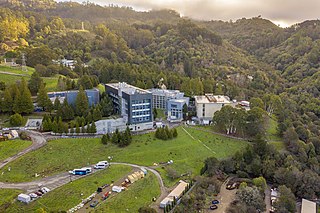
Lawrence Berkeley National Laboratory (LBNL) is a federally funded research and development center in the hills of Berkeley, California, United States. Established in 1931 by the University of California (UC), the laboratory is sponsored by the United States Department of Energy and administrated by the UC system. Ernest Lawrence, who won the Nobel prize for inventing the cyclotron, founded the Lab and served as its Director until his death in 1958. Located in the hills of Berkeley, California, the lab overlooks the campus of the University of California, Berkeley.
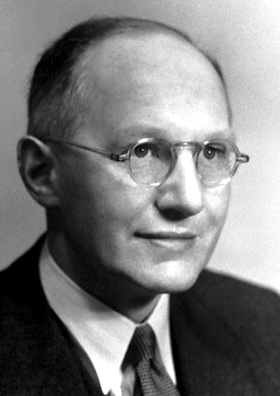
Ernest Thomas Sinton Walton was an Irish physicist and Nobel laureate who first split the Atom. He is best known for his work with John Cockcroft to construct one of the earliest types of particle accelerator, the Cockcroft–Walton generator. In experiments performed at Cambridge University in the early 1930s using the generator, Walton and Cockcroft became the first team to use a particle beam to transform one element to another. According to their Nobel Prize citation: "Thus, for the first time, a nuclear transmutation was produced by means entirely under human control."

Donald Arthur Glaser was an American physicist, neurobiologist, and the winner of the 1960 Nobel Prize in Physics for his invention of the bubble chamber used in subatomic particle physics.

Owen Chamberlain was an American physicist who shared with Emilio Segrè the Nobel Prize in Physics for the discovery of the antiproton, a sub-atomic antiparticle.

Burton Richter was an American physicist. He led the Stanford Linear Accelerator Center (SLAC) team which co-discovered the J/ψ meson in 1974, alongside the Brookhaven National Laboratory (BNL) team led by Samuel Ting for which they won Nobel Prize for Physics in 1976. This discovery was part of the November Revolution of particle physics. He was the SLAC director from 1984 to 1999.

James Watson Cronin was an American particle physicist.

Simon van der Meer was a Dutch particle accelerator physicist who shared the Nobel Prize in Physics in 1984 with Carlo Rubbia for contributions to the CERN project which led to the discovery of the W and Z particles, the two fundamental communicators of the weak interaction.
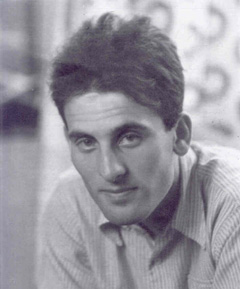
Giuseppe Paolo Stanislao "Beppo" Occhialini ForMemRS was an Italian physicist who contributed to the discovery of the pion or pi-meson decay in 1947 with César Lattes and Cecil Frank Powell, the latter winning the Nobel Prize in Physics for this work. At the time of this discovery, they were all working at the H. H. Wills Laboratory of the University of Bristol.

Giorgio Parisi is an Italian theoretical physicist, whose research has focused on quantum field theory, statistical mechanics and complex systems. His best known contributions are the QCD evolution equations for parton densities, obtained with Guido Altarelli, known as the Altarelli–Parisi or DGLAP equations, the exact solution of the Sherrington–Kirkpatrick model of spin glasses, the Kardar–Parisi–Zhang equation describing dynamic scaling of growing interfaces, and the study of whirling flocks of birds. He was awarded the 2021 Nobel Prize in Physics jointly with Klaus Hasselmann and Syukuro Manabe for groundbreaking contributions to theory of complex systems, in particular "for the discovery of the interplay of disorder and fluctuations in physical systems from atomic to planetary scales".
Hartland Sweet Snyder was an American physicist who along with Robert Oppenheimer calculated the gravitational collapse of a pressure-free sphere of dust particles as described by Einstein's general relativity, and found they contracted onto a radial distance, the Schwarzschild radius. It was later interpreted as the particles ending in the particles disappearing beneath the 'event horizon' associated with a Black Hole singularity. In recent years, it was shown by Trevor Marshall that the particle trajectories end in a shell of infinite density at the 'event horizon' radius, supporting the shell collapsar as endpoint. Snyder’s argument that the “star thus tends to close itself off from any communication with a distant observer” which is quoted as an early inference of a Black Hole, does not follow from his model. Only the very surface of the infinite density shell could reflect or emit radiation and solutions without a density singularity are needed to investigate the issue.

Helen Thom Edwards was an American physicist. She was the lead scientist for the design and construction of the Tevatron at the Fermi National Accelerator Laboratory.
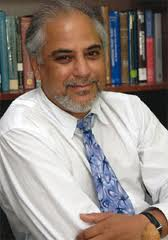
Swapan Chattopadhyay CorrFRSE is an Indian American physicist. Chattopadhyay completed his PhD from the University of California (Berkeley) in 1982.

The Cornell Electron Storage Ring is a particle accelerator operated by Cornell University and located 40 feet beneath a football field on their Ithaca campus. The accelerator has contributed to fundamental research in high energy physics and accelerator physics, as well as solid state physics, biology, art history and other fields through its use as a synchrotron light source. For many years, CESR held the world luminosity record for electron-positron collisions.
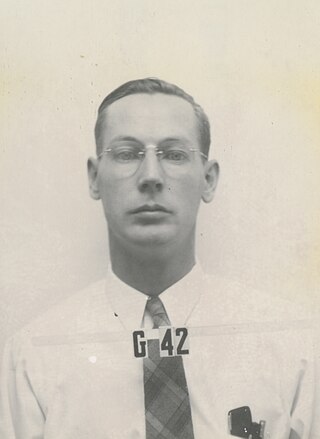
Donald William Kerst was an American physicist who worked on advanced particle accelerator concepts and plasma physics. He is most notable for his development of the betatron, a novel type of particle accelerator used to accelerate electrons.
Keith Randolph Symon was an American physicist working in the fields of accelerator physics and plasma physics.

Andrew Marienhoff Sessler was an American physicist, academic, former director of the Lawrence Berkeley National Laboratory (1973–1980), humanitarian and former president (1998) of the American Physical Society.
John Paul Blewett was a Canadian-American physicist, known as "a key figure in the development of particle accelerators".
Maury Tigner is an American physicist working on particle accelerators and experimental particle physics.
References
- ↑ "Engines of Discovery A Century of Particle Accelerators https://www.worldscientific.com/worldscibooks/10.1142/6272
- ↑ "John Cockroft". The Nobel Prize. Retrieved 15 December 2021.
- ↑ Peters, Erika. "Happy 100th Birthday to Ernest Courant". Brookhaven National Laboratory. Retrieved 15 December 2021.
- ↑ "Helen T. Edwards — MacArthur Foundation". macfound.org. Retrieved 4 November 2016.
- ↑ Anderson, Bethany (June 11, 2013). ""A Very Bold and Original Device": Donald Kerst and the Betatron". University of Illinois. Retrieved October 2, 2014.
- ↑ "The Nobel Prize in Physics 1939". NobelPrize.org. Retrieved 15 December 2021.
- ↑ "The Nobel Prize in Physics 1984". NobelPrize.org. Retrieved 16 December 2021.
- ↑ "The Nobel Prize in Chemistry 1908". NobelPrize.org. Retrieved 16 December 2021.
- ↑ "Andrew Sessler 1928-2014". www.aps.org. Retrieved 16 December 2021.
- ↑ "Van de Graaf, Robert Jemison, 1901-1967". history.aip.org. American Institute of Physics. Retrieved 16 December 2021.
- ↑ "The Nobel Prize in Physics 1984". The Nobel Foundation . Retrieved 31 October 2009.
- ↑ "The Nobel Prize in Physics 1951". NobelPrize.org. Retrieved 16 December 2021.
- ↑ Livingston, M. S. (1980). Marton, L. (ed.). "Early history of particle accelerators". Advances in Electronics and Electron Physics. Academic Press. 50: 24. Bibcode:1980AEEP...50....1L. doi:10.1016/S0065-2539(08)61061-6. ISBN 9780080577159.